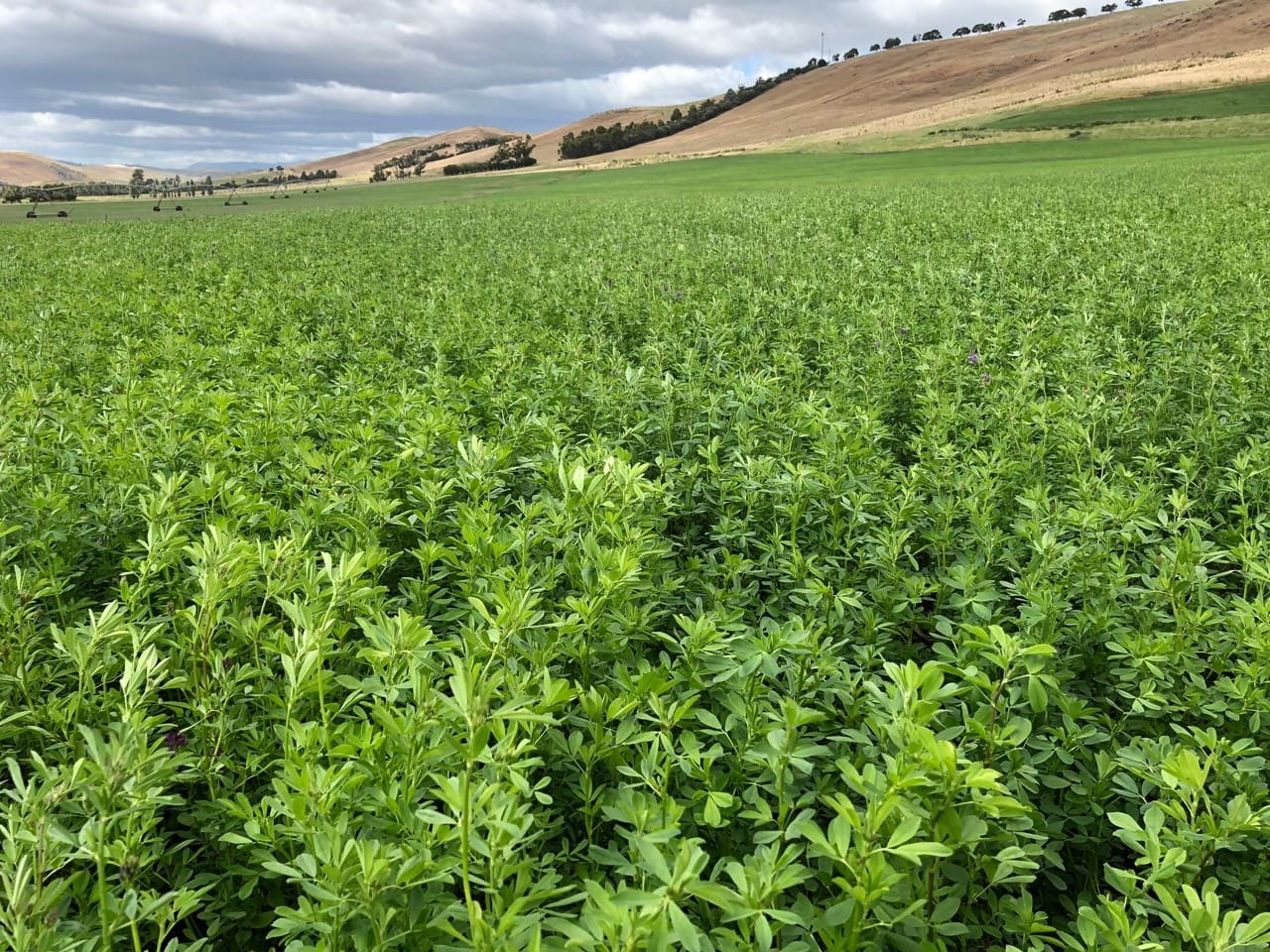Overview
The AlfaGen L70 Lucerne vs Aurora trial aimed to compare the performance and attributes of L70 Lucerne and Aurora, two varieties of lucerne forage crops.
The trial was conducted across multiple sites in 2011, including irrigated locations in Virginia and Struan, South Australia, as well as Forbes and Wagga Wagga, New South Wales. The comparison focused on various factors such as disease resistance, yield results, germination standards, and pricing.
Highlights
- L70 Lucerne offers a higher disease and pest package compared to Aurora.
- It exhibits superior forage genetics, including a higher leaf to stem ratio, which contributes to improved forage quality.
- Additionally, L70 Lucerne surpasses the minimum 90 percent germination standards, exceeding the current minimum certified standard of only 60 percent for Aurora.
- The seed production of L70 Lucerne is derived solely from dryland stands, ensuring its integrity and performance in dryland grazing enterprises.
- L70 Lucerne offers producers higher returns and allows them to plant with confidence knowing they are covered by the Establishment Guarantee program*
Disease Rating Comparison
Anthracnose: L70 Lucerne has a rating of R (Resistant) compared to Aurora’s lower rating of MR (Moderate Resistance)
Bacterial Wilt: L70 Lucerne has a rating of R (Resistant) , Aurora’s has a lower rating of LR (Low Resistance)
Spotted Alfalfa Aphid and Bluegreen Aphid: Both Aurora and L70 Lucerne demonstrate resistance with a rating of HR (High Resistance).
Phytophthora Root Rot: Both Aurora and L70 Lucerne show resistance with a rating of R (Resistant).
Yield Results and Pricing
Comparison
L70 Lucerne offers competitive pricing similar to Aurora, resulting in comparable per hectare input seed costs.
In terms of yield, L70 Lucerne outperformed Aurora with a total yield of 18.5 t/ha compared to Aurora’s 17.0 t/ha. This difference in yield translates into extra hay returns of $300 per hectare per year for L70 Lucerne.
Germination Standards
and Establishment Guarantee
The comparison of germination standards reveals that L70 Lucerne has a minimum germination rate of 90%, while Aurora’s minimum germination rate is only 65%.
This significant difference in germination percentage translates to improved establishment rates for L70 Lucerne.
The trial data shows a 38% increase in plant establishment per square meter for L70 Lucerne compared to Aurora.
Additionally, L70 Lucerne is backed by an Establishment Guarantee program, providing farmers with confidence and assurance in their planting decisions.
Conclusion
The AlfaGen L70 Lucerne vs Aurora trial results highlight the superior attributes and performance of L70 Lucerne as an excellent alternative to Aurora.
With higher disease and pest resistance, superior forage genetics, and a minimum germination rate of 90%, L70 Lucerne offers farmers a reliable and productive option for dryland grazing enterprises.
The trial data further demonstrates L70 Lucerne’s higher yields, competitive pricing, extra hay returns, and improved establishment rates compared to Aurora.
By choosing L70 Lucerne, farmers can benefit from increased forage quality, better disease resistance, higher dry matter production, improved germination rates, and the added assurance of an Establishment Guarantee program.
